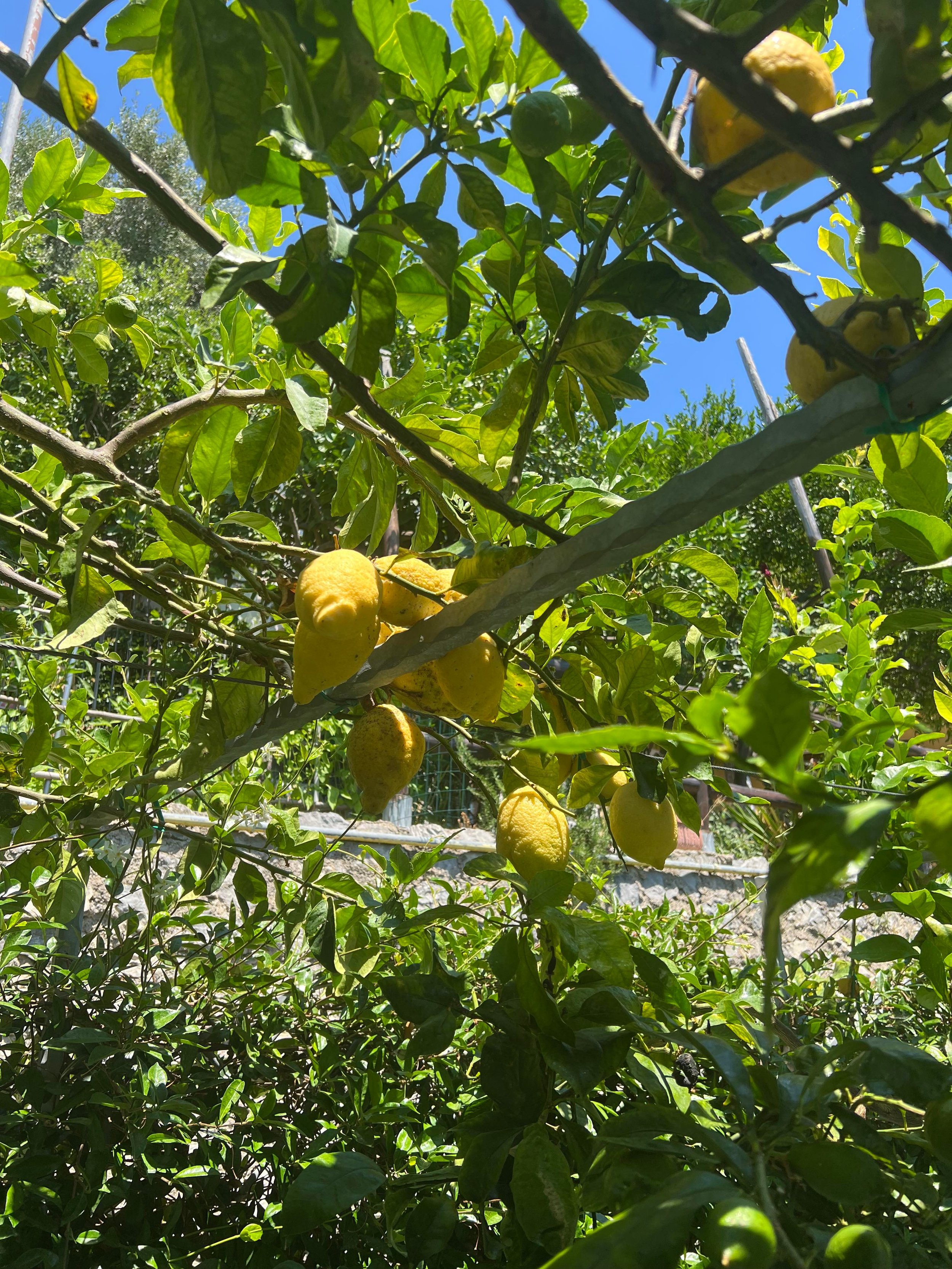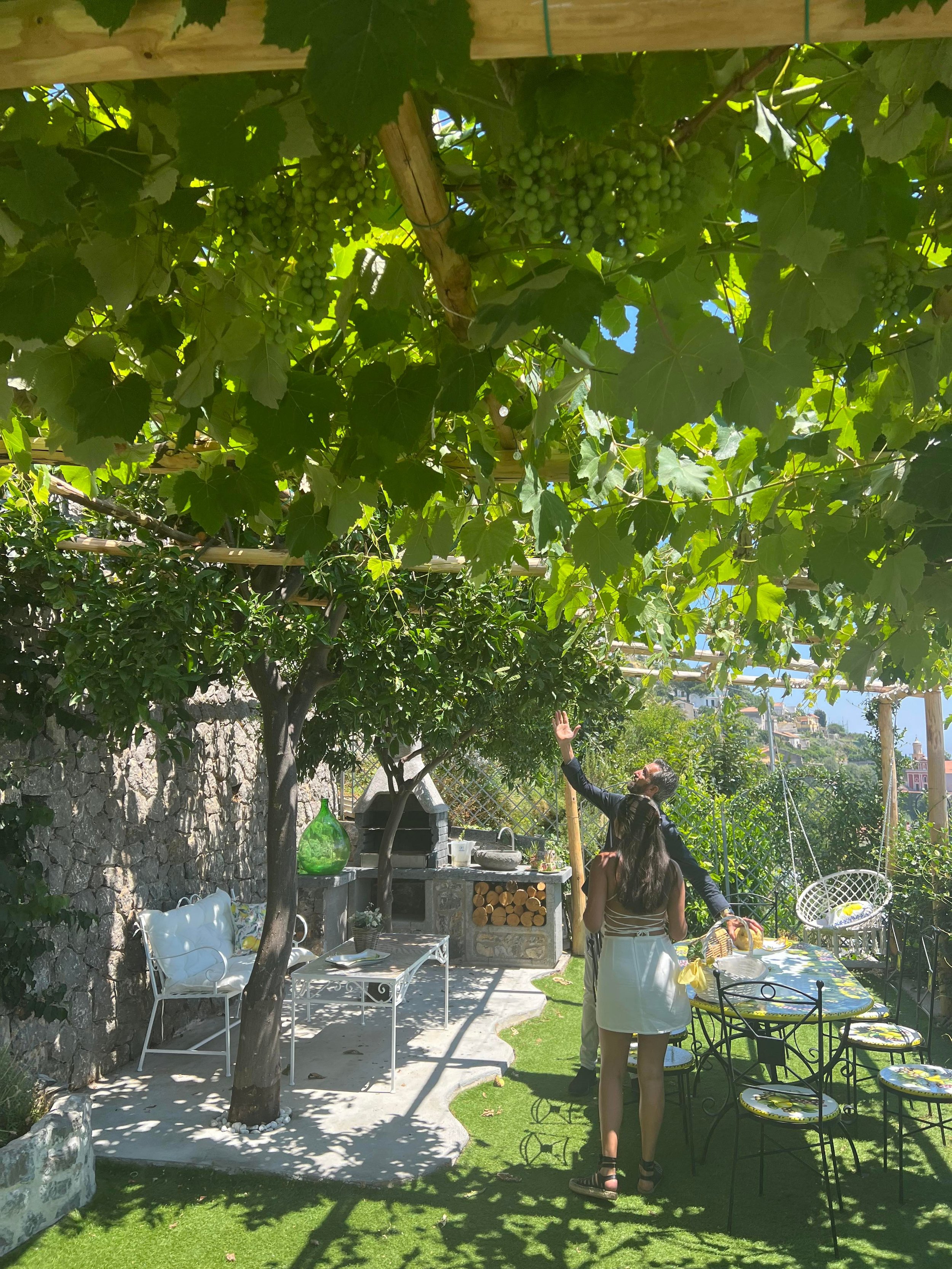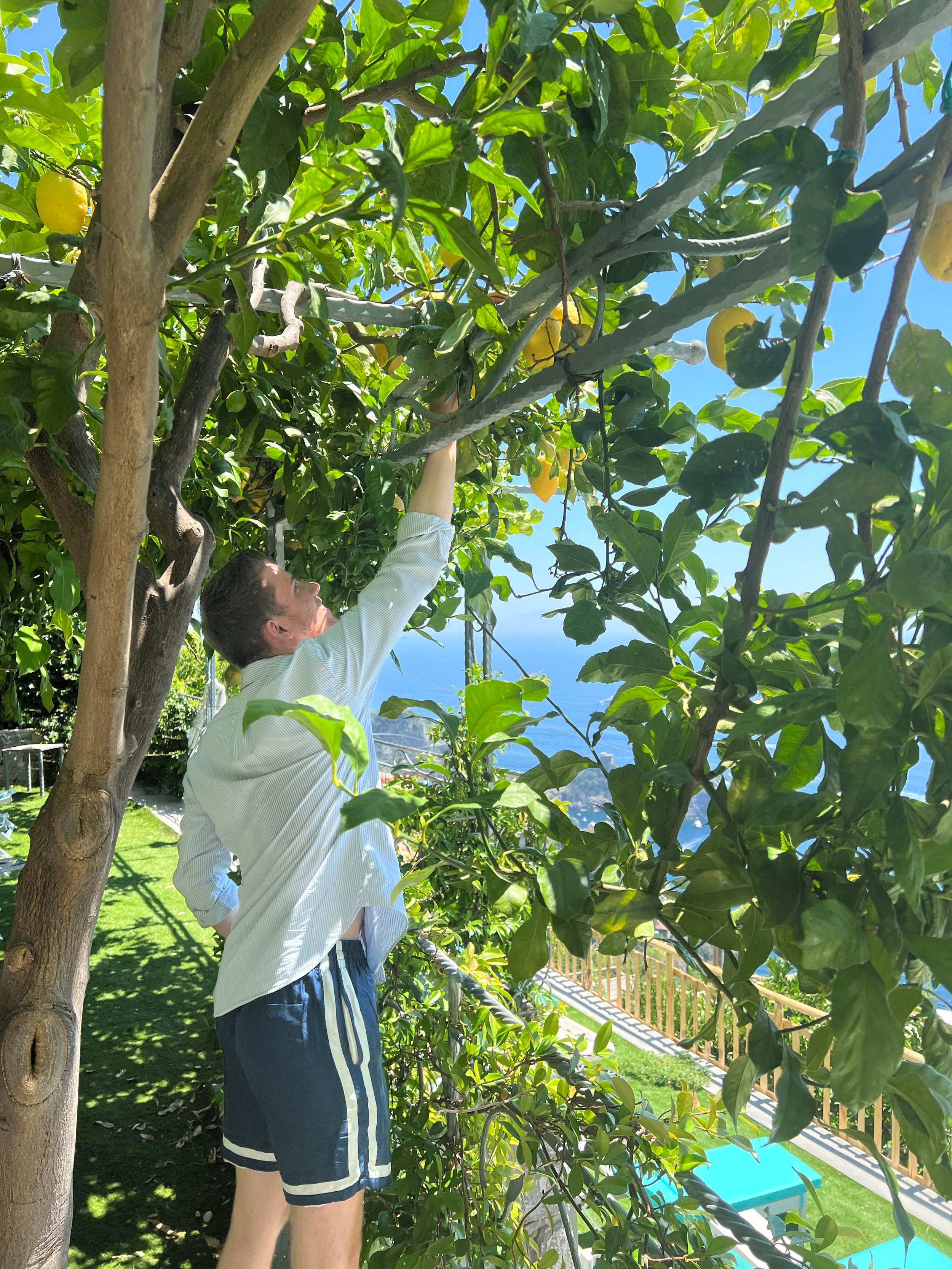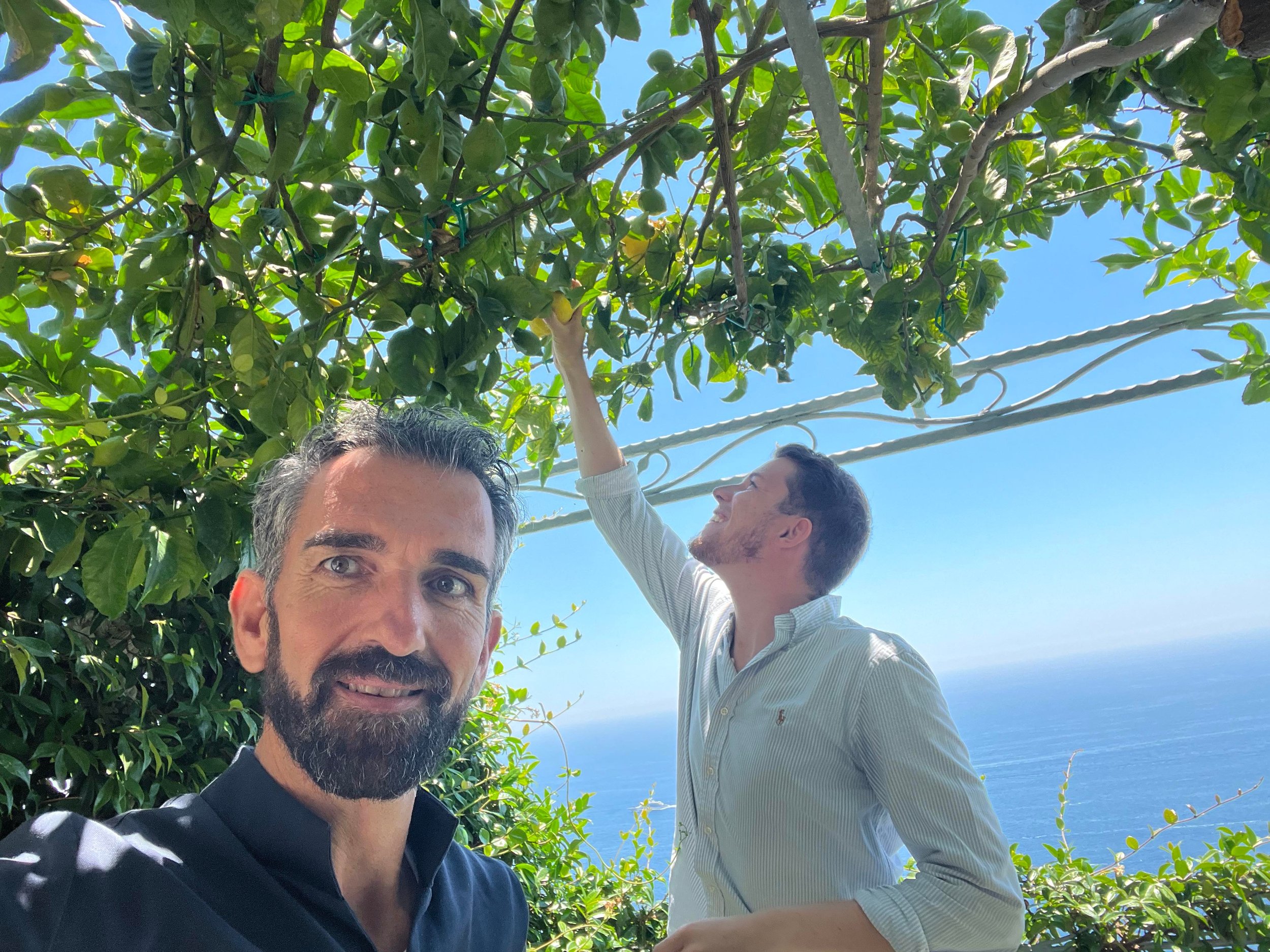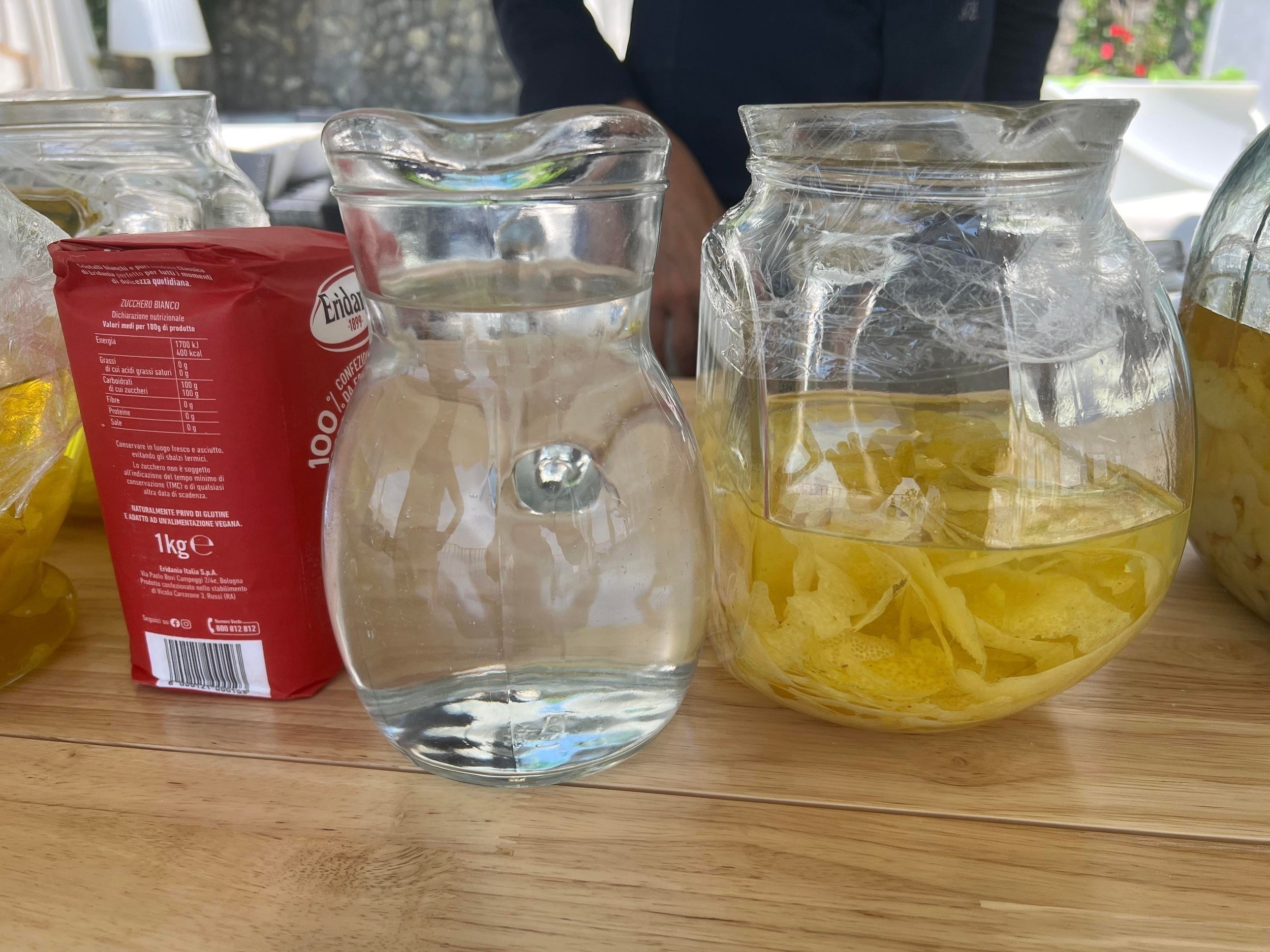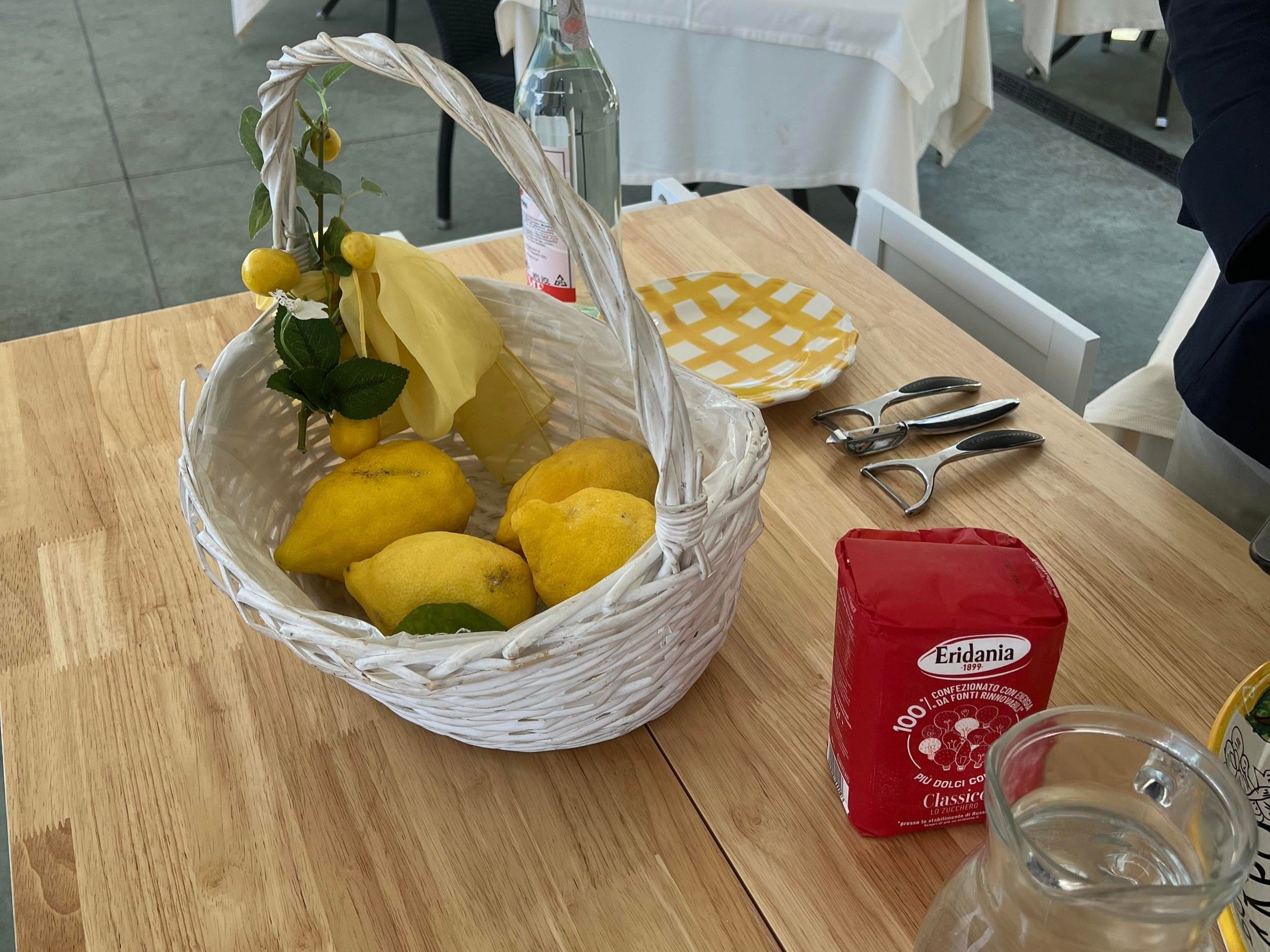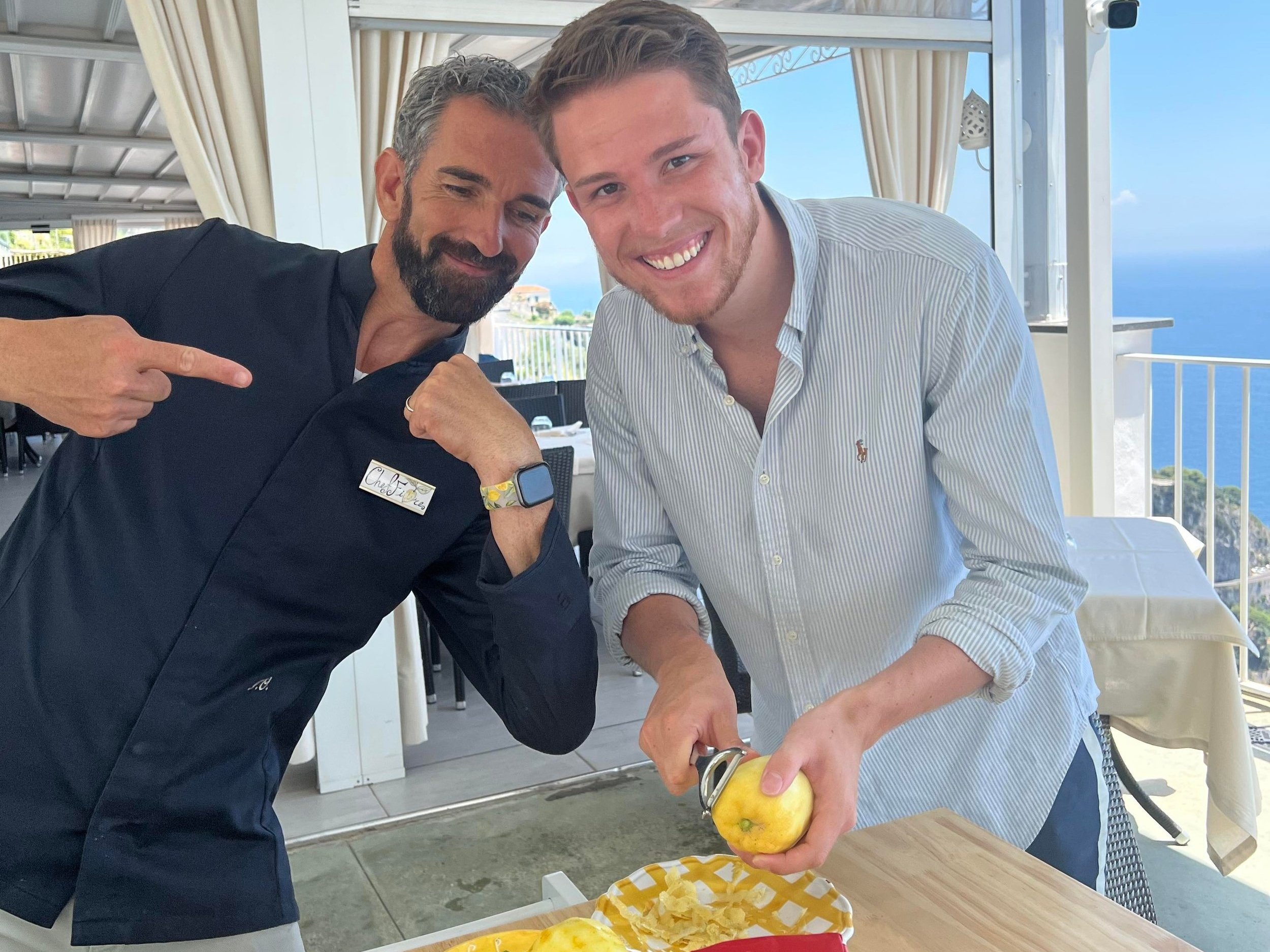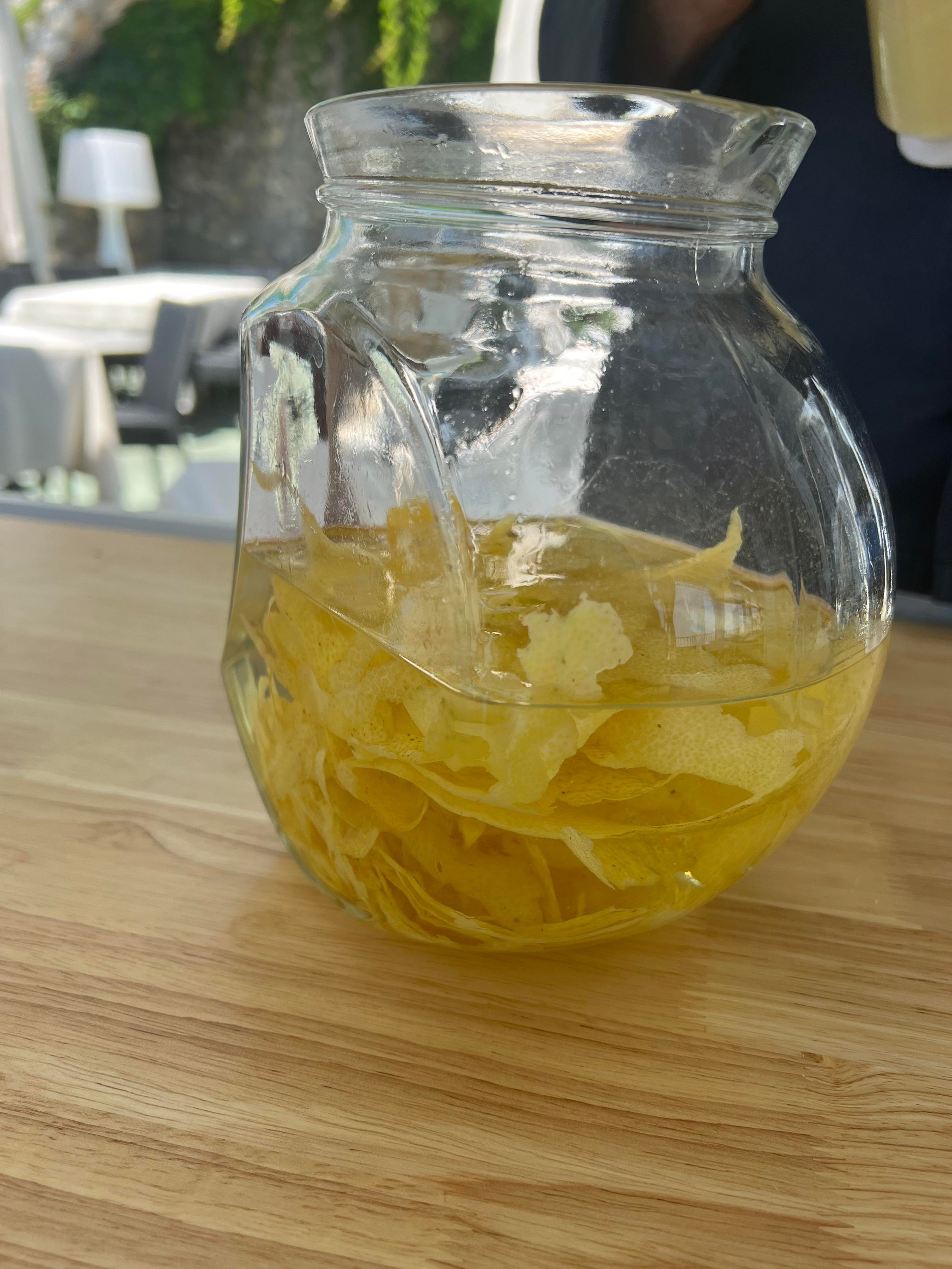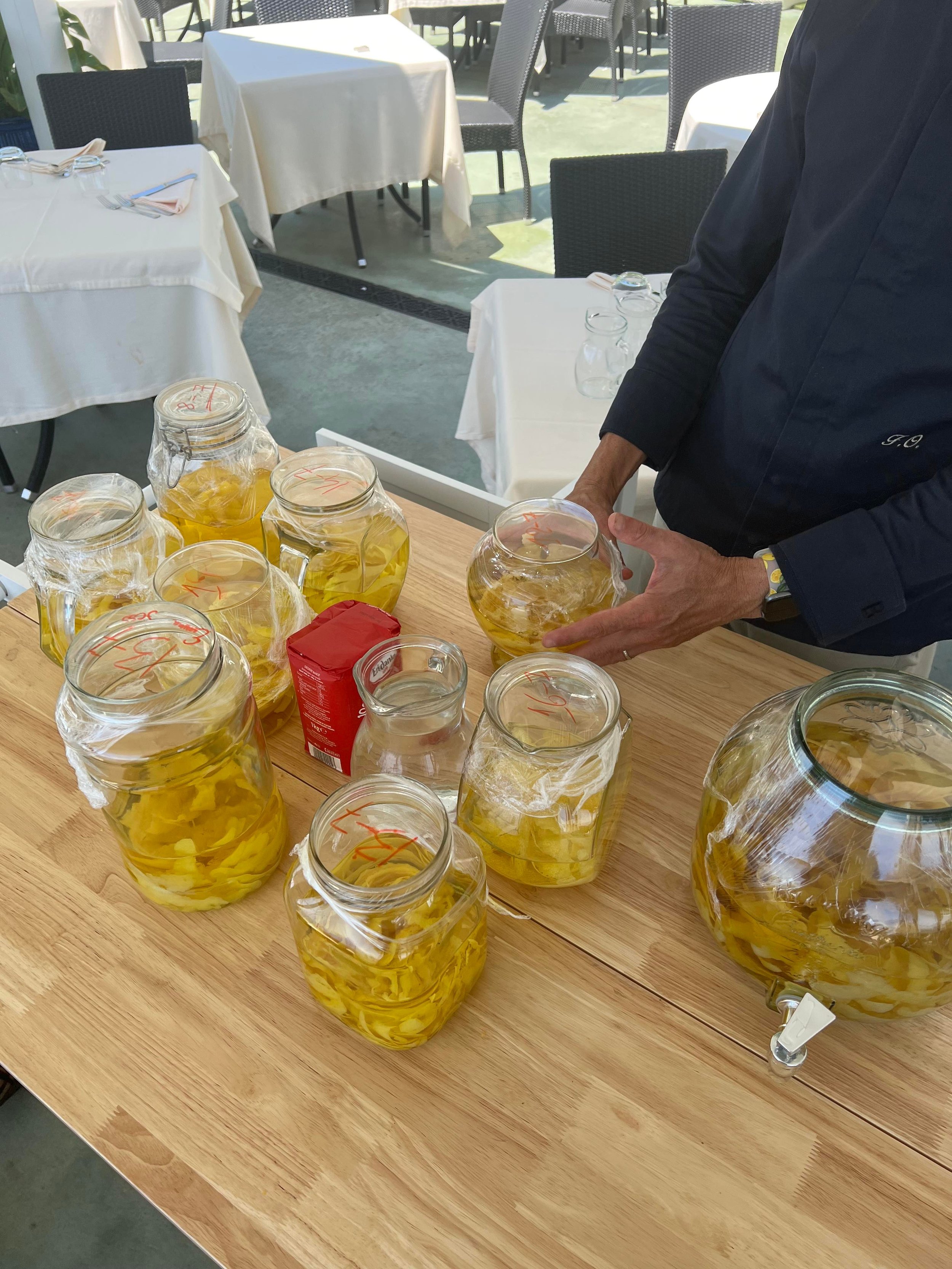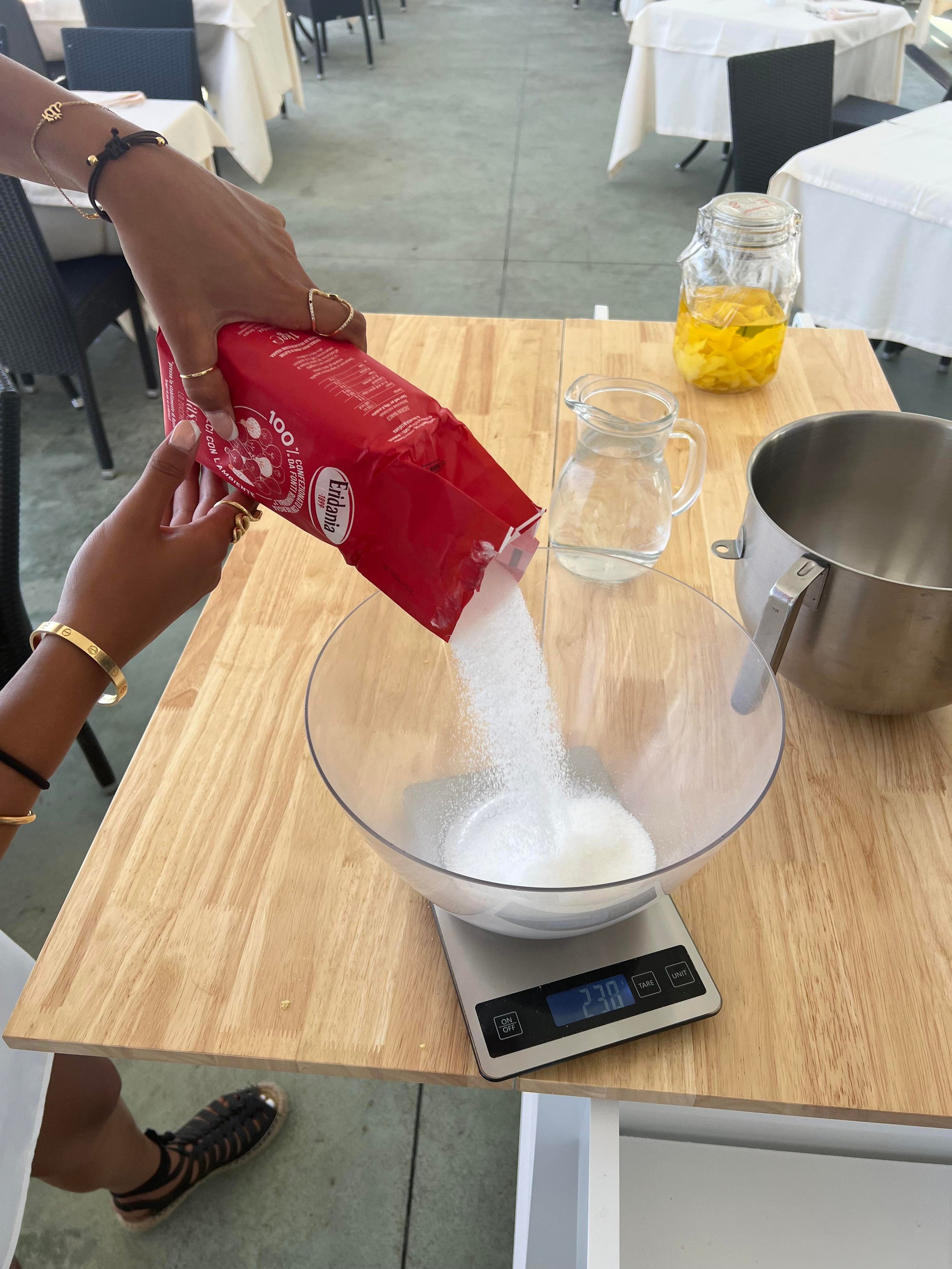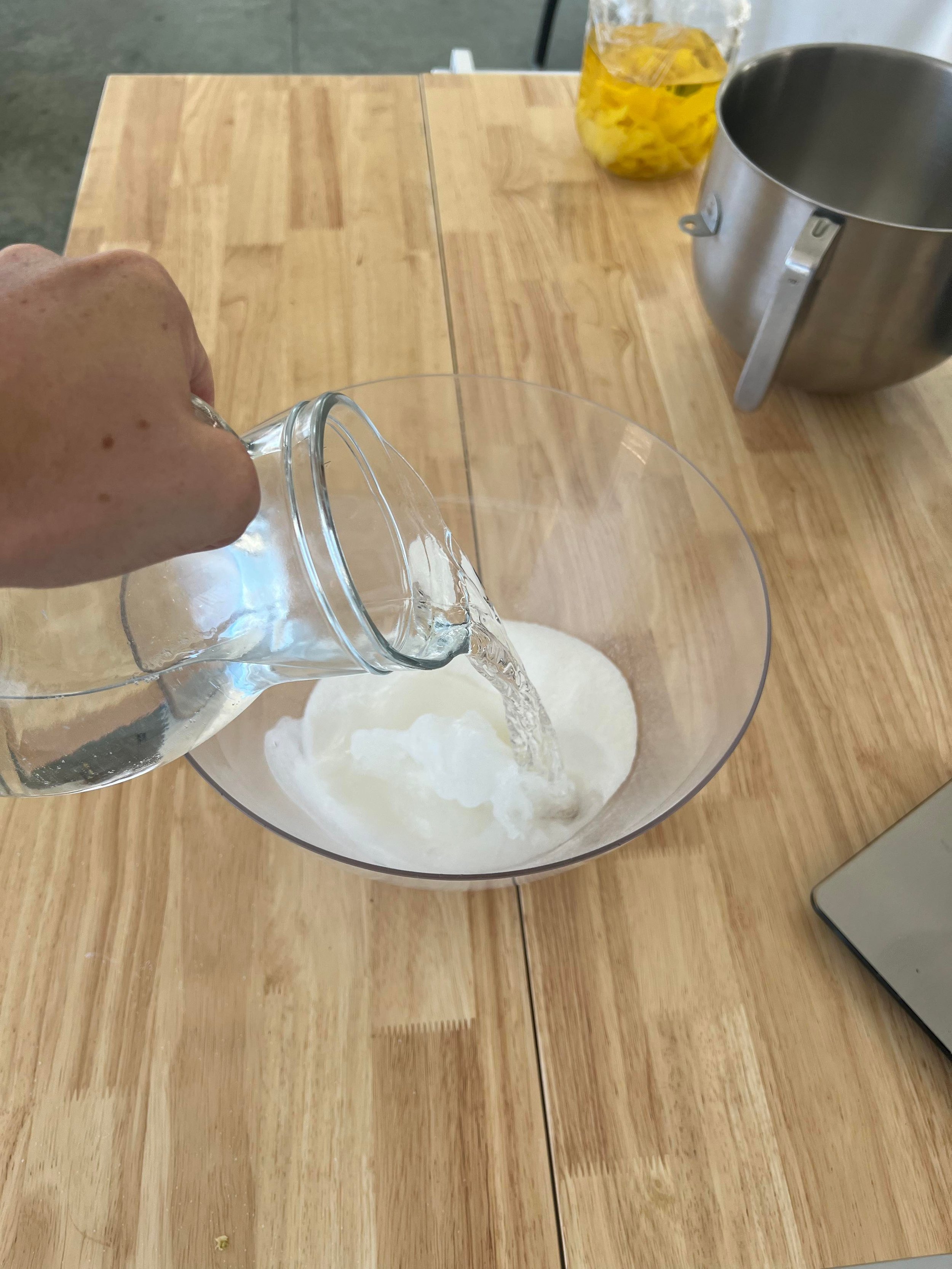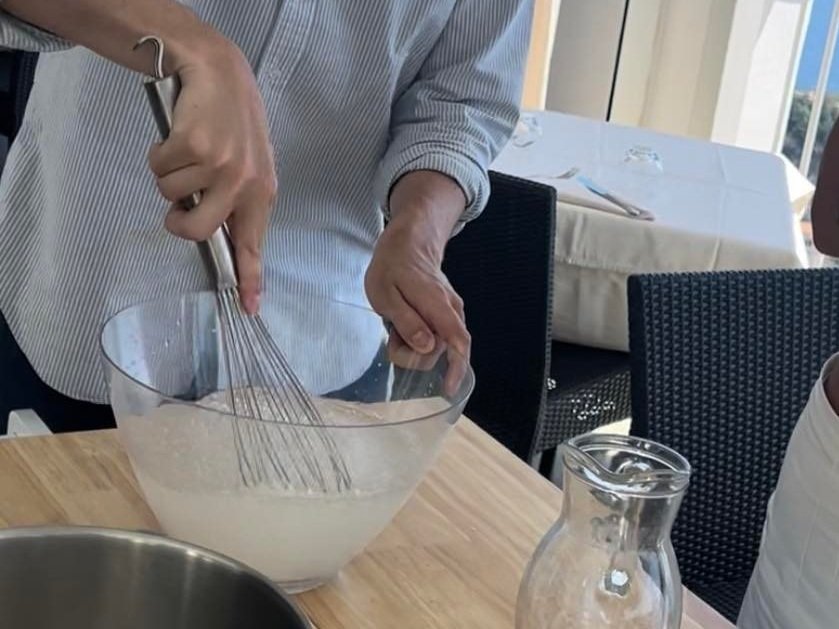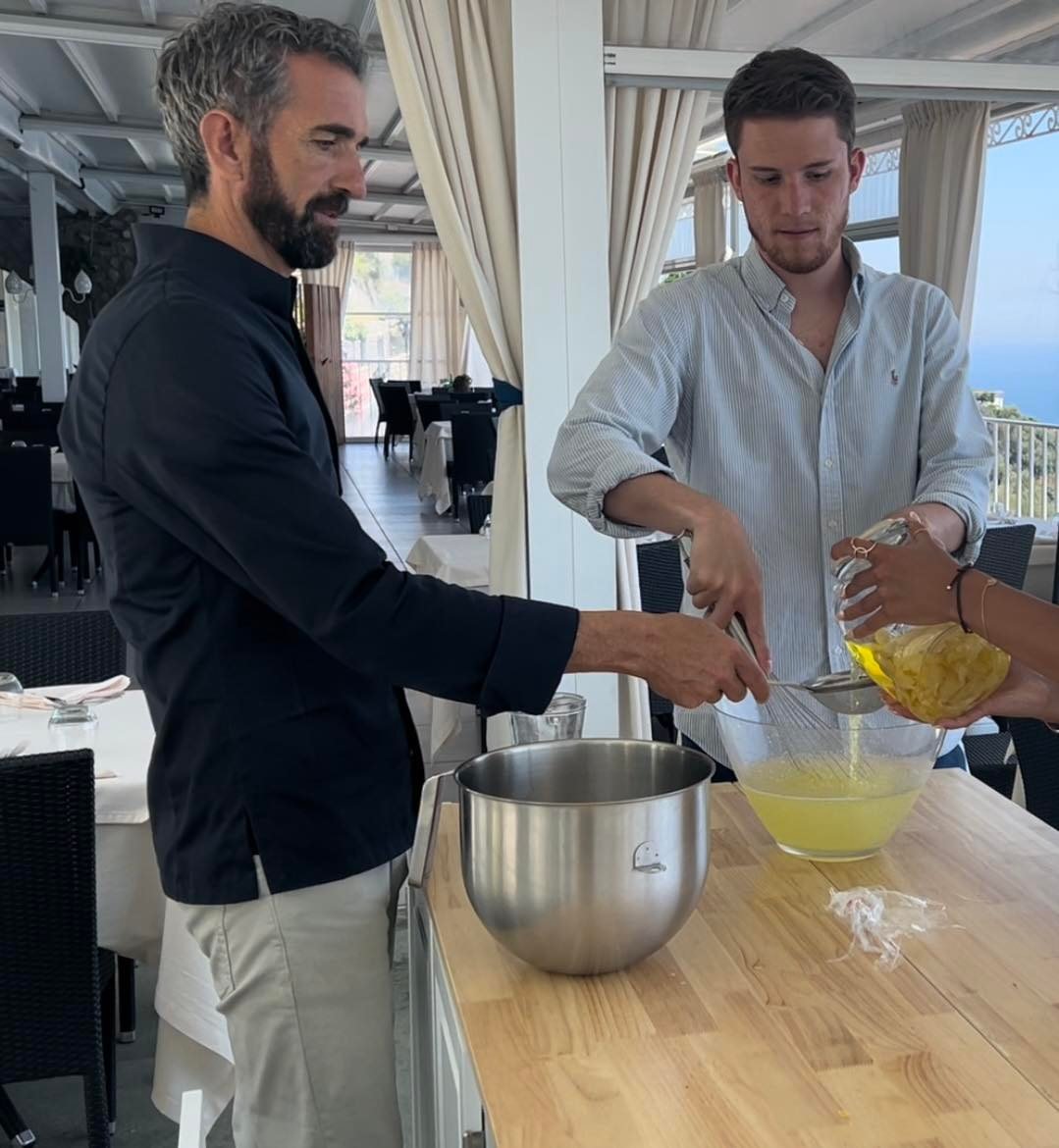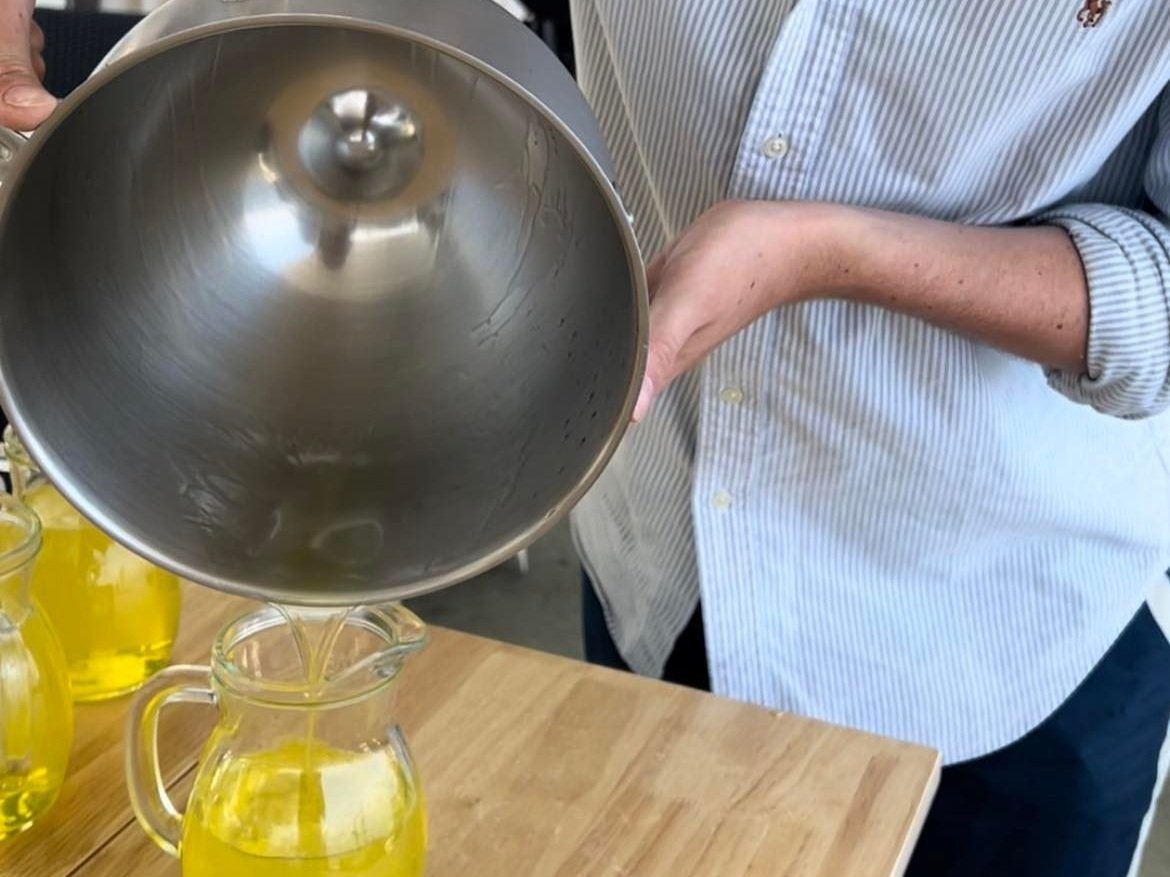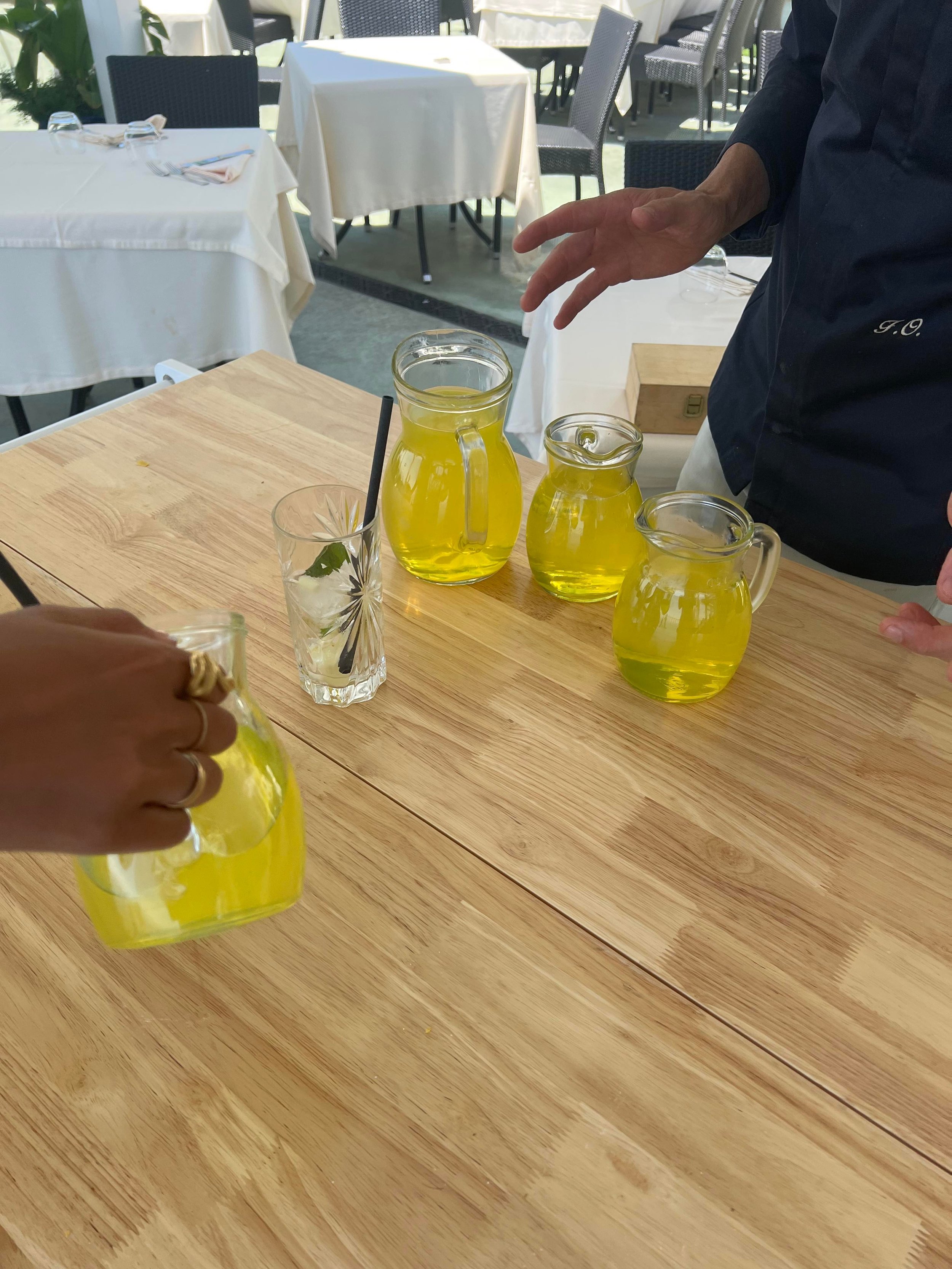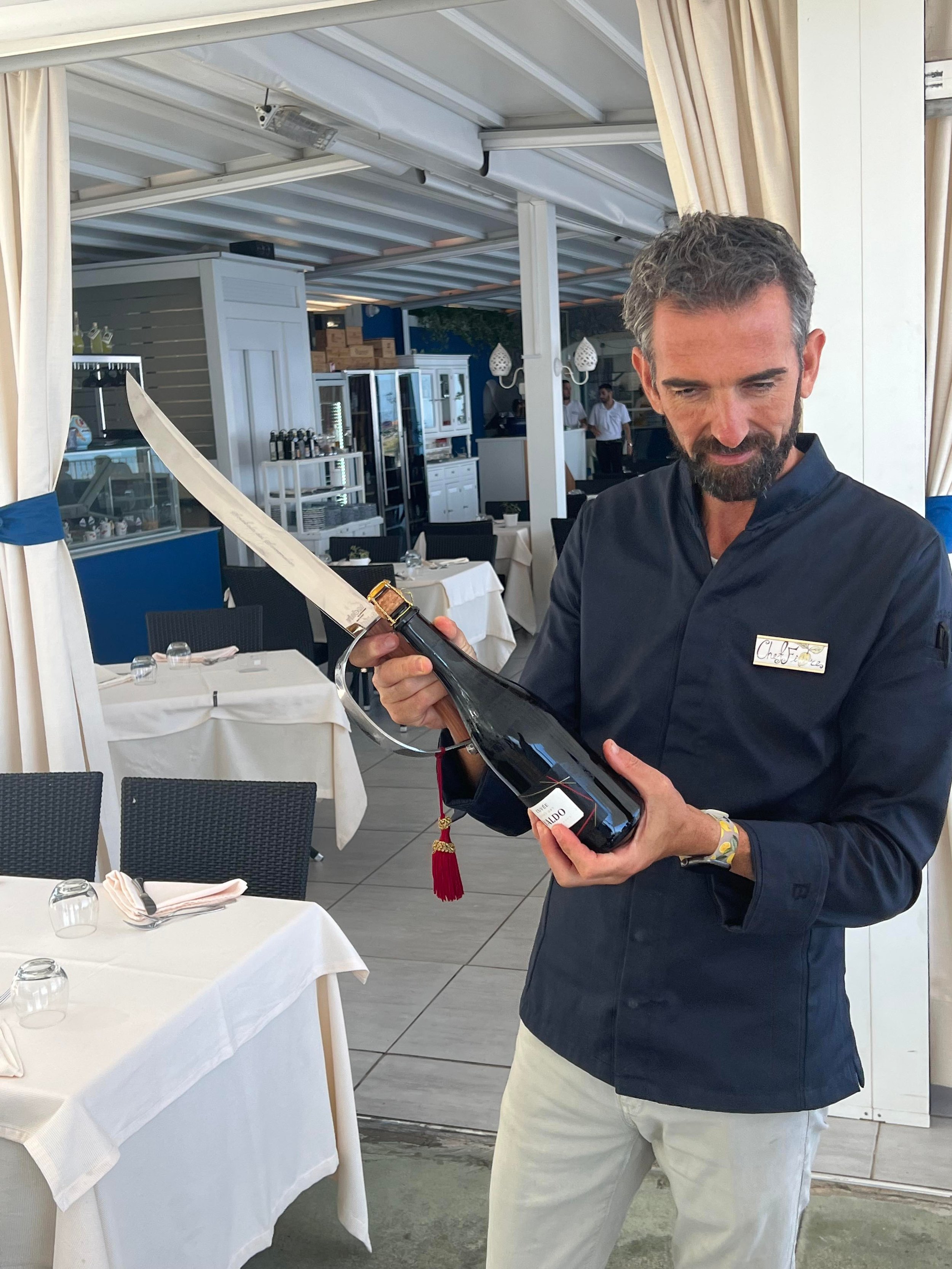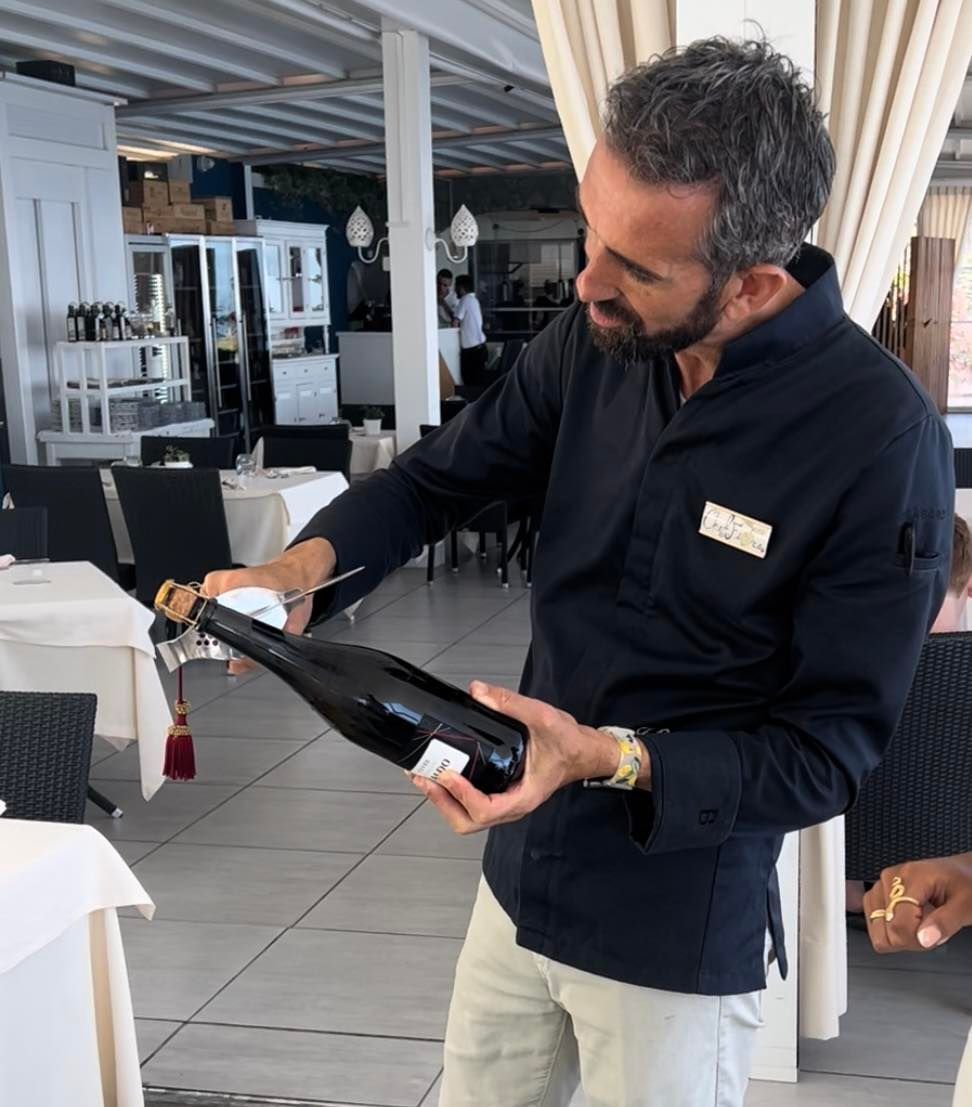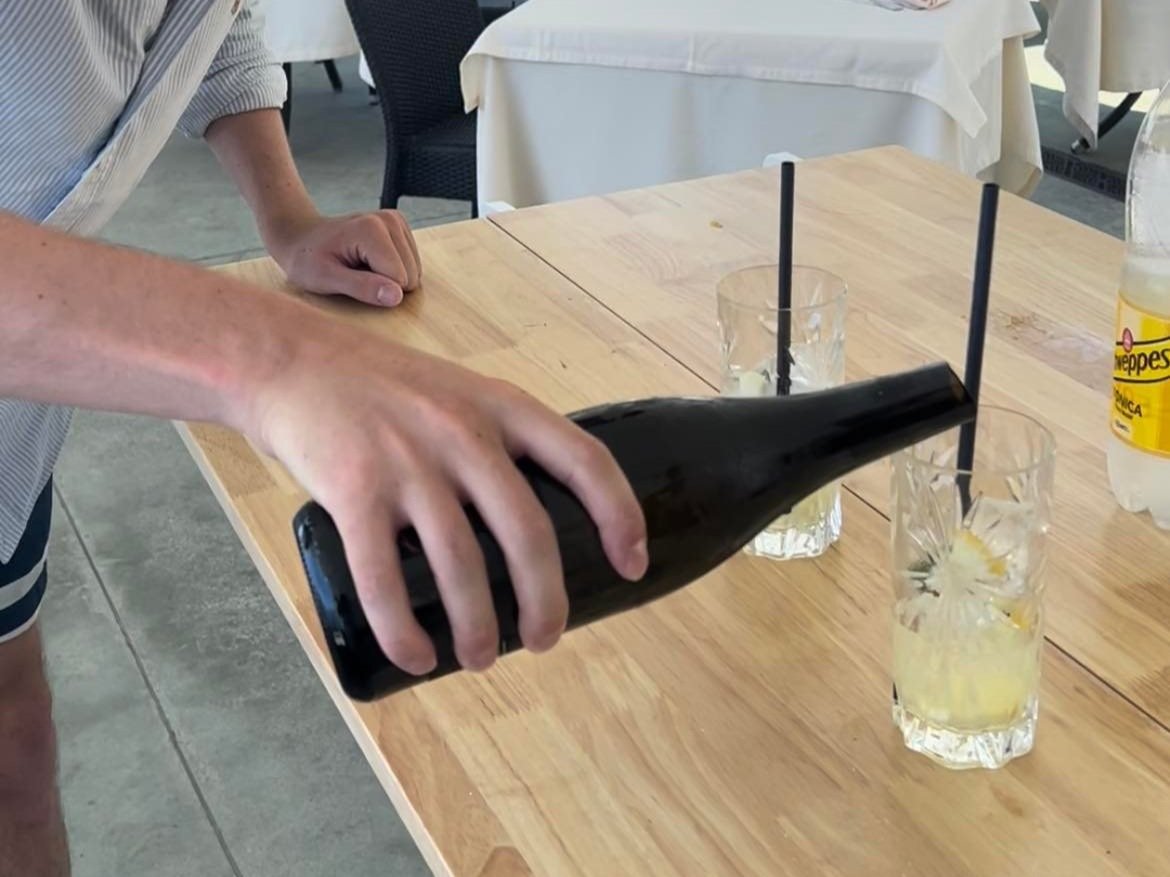Away Day Review #3 - Le Bontà del Capo (Amalfi Coast)
THE EXPERIENCE
The Lemon Garden
We met Chef Fiore at 12:30pm inside Le Bontà del Capo. Having navigated the treacherous Amalfi stairs, we arrived in desperate need of hydration, and they welcomed us with a large bottle of Acqua Panna, which set us up nicely for the experience. Fiore exuded charisma and made us feel instantly at home. We took a short trip to Villa il Limoneto, where the Lemon Garden overlooked the scenic Amalfi sea.
Fiore outlined the history of this iconic yellow fruit, regarded as the ‘Gold of Amalfi’, whilst allowing us to harvest four lemons from the trees, which were then used as part of the four-course tasting menu and limoncello demonstration. I found the sheer size of Amalfi lemons fascinating and with the sun beaming down on us, the thought of a lemon-centric menu was certainly appealing.
The Limoncello Demonstration
We then assisted Fiore in a practical demonstration in the preparation of Italy’s internationally renowned lemon liqueur, Limoncello. The process is outlined in the photos below and it was really enjoyable. I found it interesting how simple the process was, but the sheer quality of the local lemons was the secret ingredient to making a flavoursome Limoncello. The end product was a traditional Italian aperitif, the ‘Lemon Spritz’.
‘LIMONCELLO’ - A BRIEF HISTORY & A LEGAL PERSPECTIVE
The Origins of Limoncello
The existence of a definitive history of limoncello’s origins is somewhat contentious, as a series of anecdotes and myths intertwining has led to debate over which region of Southern Italy really has the accolade of originating this iconic liqueur. Sorrento, Amalfi and Capri all hold claims to being limoncello’s first hometown.
Federvini, The Italian Association of Wine/Liqueur Producers, on its website surmises that limoncello originates from a humble inn based in the island Azzurra, where Maria Antonia Farace homed a lemon and orange garden. Her grandson then set up a bar where limoncello was its main speciality and in 1988, a further descendant of the family, Massimo Canale, set up a handmade production of limoncello, registering ‘Limoncello’ as a trademark.
An extensive list of theories exist, with anecdotes from Sorrento and Amafli dating back to the Middle Ages. Coastal stories recount the liqueur being treated as a drink for a guest; drank in the morning by fishermen and farmers to ensure warmth during the Saracene invasions and; drank by monks between prayers at monasteries.
It is the second most popular liqueur in Italy, with Campari coming out victorious and has evolved away from being simply lemon-flavoured, as now variations exist with oranges, pistachios, cantaloupes and strawberries amongst many more.
A Legal Perspective
Limoncello is traditionally produced in South-Western Italy and originated initially from Femminello St Teresa lemons, more widely known ‘The Lemons of Sorrento’. They are qualitatively unique due to their distinctive characteristics of preservability and local aroma. The cultivation techniques in the Sorrento Peninsula are specifically rare enough that they have obtained the communitarian acknowledgement of ‘Typical Geographic Mark’, which protects and exploits the exclusive 'I.G.P. Lemon of Sorrento.’ All producers of the collective mark must comply with the production protocol due to the Lemons of Sorrento obtaining protection of geographical indication as of February 1st 2001, by the European board, pursuant to Article 6, Paragraph 2 of the ECC Regulation No. 2081/92. A limoncello will be assigned a Protected Geographical Indication (PGI) only if produced by cold maceration in ethyl alcohol of the Sorrento’s Lemons peel PGI, recognised as ‘the Ovale di Sorrento ecotype’.
Under EU law, the liqueur is required to have a minimum ABV percentage of 15%, but rarely exceeds 30%.
There have been some intellectual property disputes surrounding limoncello. An interesting case in this regard was Shaker di L Laudato & C SAS v Office for Harmonisation in the Internal Market (Trade Marks and Designs) (OHIM) (T-7/04).
Shaker v OHIM
In 2008, this intriguing case relating to Article 8(1)(b) of Regulation NO 40/94, was concluded. Shaker v OHIM offers a pervasive example as to why the global assessment of the various relevant factors in assessing ‘the likelihood of confusion’ for trademarks should be considered holistically and in great depth.
In summary, the case concerned Shaker appealing against a Board of Appeal decision to uphold a successful opposition to its application for registration as a Community trademark of the above figurative mark. The registration was sought in relation to goods, in Classes 29 (‘jellies, jams, compotes’) and 33 (Lemon liqueur from the Amalfi Coast’) of the Nice Agreement 1957. Limiñana y Bottella, SL filed a notice of opposition in relation to Spanish registration of the word mark, ‘LIMONCHELO’ under Class 33 (‘Wines, spirits and liqueuers’). The Opposition Division initially held that in Spanish territory, there was a likelihood of confusion due to the visual and phonetical similarities between identical goods.
After a series of appeals, the European Court of Justice finalised the proceedings, after Shaker argued that Article 8(1)(b) was infringed and opposition to its trademark should be rejected, due to a purported ‘misuse of powers’ and a ‘breach of duty to state reasons'. Shaker argued that the earlier trademark possessed a weak distinctive character since it described lemon-based liqueurs and merely translated Limoncello into Spanish. Shaker felt it was mistakenly held that the word ‘limoncello’ was the dominant component of the trademark applied for.
The ECJ made a global assessment, considering all relevant factors and the relevant public’s perception of the signs and the goods at issue. It must be noted that the relevant public in this instance was average Spanish consumers as the relevant territory was Spain. Although there were secondary words, ‘della Costiera Amalfitana’, ‘Shaker’ and the lemon-decorated round plate image, in the circumstances, limoncello was held to dominate the likely impression in the eyes of the relevant public. Comparisons were made between the marks:
Visually, there was a certain similarity as ‘limoncello’ and ‘limonchelo’ are visually almost identical and the other elements of the mark are secondary to the dominant word, ‘limoncello’.
Phonetically, they are similar and pronounced almost identically across both languages, particularly because the Spanish public typically pronounces ‘limoncello’ in the Italian way.
Both marks commonly concern the first word of the trade mark applied for.
Conceptually, they are similar as it is not excluded that the words ‘limoncello’ or ‘limonchelo’ may refer to a lemon-based liqueur. The wording ‘della costiera amalfitana’ would be regarded by the relevant public as from ‘a particular coast’, and there is nothing prohibiting the goods covered by the earlier mark from coming from the same coast.
It was ruled that The Board of Appeal’s finding that the goods were not practically identical, visually and phonetically, was erroneous, although there was a certain similarity between the marks. However, the ECJ still concluded that there was a likelihood of confusion between the marks due to the aforementioned similarities.
The takeaway here is the overall impression that the mark gives is crucial, and this case epitomises the difficulties involved at the time in registering marks similar to the Spanish mark, ‘LIMONCHELO’, despite this arguably lacking distinctive character.
THE SCRAN
Chef Fiore took full advantage of the four lemons we picked during the Lemon Tour in order by delivering a gastronomic masterclass. Four courses were provided, each presenting a dish with lemon at the heart of its creation.
1st Course
‘Provola Cheese on Leaves with Lemon Scented Prawns’
Throughout my trip to the Amalfi Coast, it was clear that Italy’s offering of cheese and seafood was truly delightful. The texture of the soft provola alongside the crispy tempura-styled prawns was perfect, and represented a great kick-off to the tasting menu. Chef Fiore also provided us with a side salad of pizza dough with arugula leaves, tomatoes and parmesan, which offered a lovely aside to the flavourful appetiser.
2nd Course
‘A Duet of Ravioli with Ricotta & Lemons and Seabass’
Ricotta ravioli was my favourite dish across my week in Italy, but this creative take on the Amalfi classic stole the show. Fiore, during the Lemon Tour, praised the flavour deriving from his ‘mixed graft citrus tree’, where oranges are combined with lemons. The powerful citrus tones combined well with the ricotta, leaving me wanting more!
3rd Course
- Baked Fish with Lemon Potatoes -
Instantly, the presentation of the fish on Bontà’s inventive plateware caught the eye. The fish was smothered in soft citrusy potatoes, laid atop the prominent lemon leaf, blending seamlessly into the plate’s artistic design. It was a tasty, light course prior to the exciting dessert.
4th Course
- A Trio of Lemon Desserts - Lemon Delight, Lemon Sorbet & Lemon Ice-Cream -
The refreshing threesome of lemon joys ended off an unforgettable meal in style. My personal favourite was the lemon sorbet, as it cleansed the palette so well, and you could really taste the quality of the lemons shining through in this course.
REFRESHMENTS
‘Lemon Spritz’
Wonderfully refreshing on a hot summer’s day. I would highly recommend recreating it if you desire an alternative to the Aperol Spritz.
‘Shot of Limoncello’
An Italian classic, as ubiquitous as pasta or pizza in the Amalfi Coast. During lunch-time and after a hefty four course meal, it certainly left a kick, but knowing it was concocted in-house made it extra special. The chilled shot glass and ice-cold liqueur ensured it went down smoothly.
THE FEE
Overall, it costs €50 per person for the ‘Lemon Tour’, four courses, limoncello making, two cocktails and a shot of limoncello. A very reasonable price for such a memorable experience.
THE REVIEW
This incredible experience has garnered Food & Footy’s first 5* review, as a result of the warmth the staff instantly provided us from minute one to the last. The food matched their efforts and learning about Italian culture whilst tucking into a refreshing drink overlooking the sea made sure I will not be forgetting about Bontà anytime soon! I would highly recommend a visit if you desire a jam-packed schedule of indulgence.
Room for Improvement?
A Food & Footy first, but for the price of €50, improving on the experience would seem overly critical. It felt like we found a gem inside the Amalfi Coast, away from the tourist traps spread across the array of beautiful seafront towns.
THE EYE TEST
THE TASTE TEST
SERVICE
ATMOSPHERE
PLAYER OF THE MATCH
- CHEF FIORE -
FINAL MATCH RATING
LOCATION
Address: Le Bontà del Capo, Via I Maggio, 14, 84010 Conca dei Marini SA, Italy
Website: https://www.lebontadelcapo.it/






